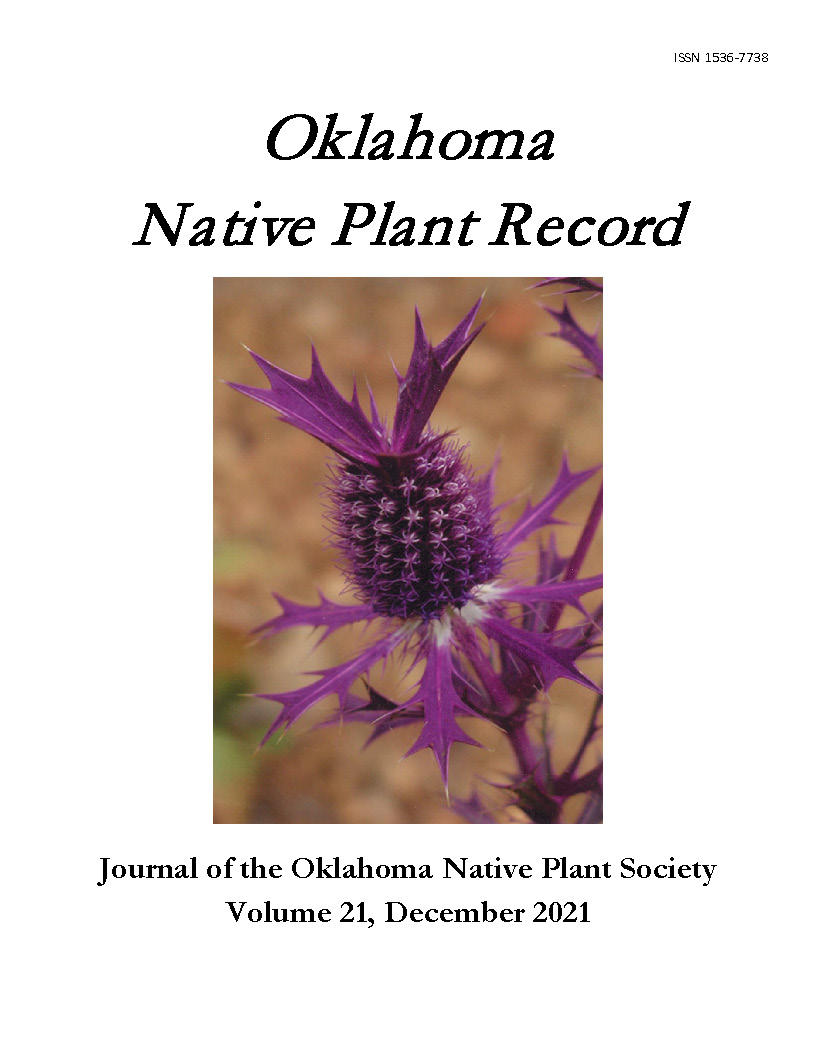Measuring Changes in Phenology of Oklahoma Asteraceae Using Herbarium Specimens
Main Article Content
Abstract
Analyzing shifts in plant flowering times (flowering phenology) in response to changing climate is crucial to understanding the impacts of climate change on plants. Herbaria contain the physical record of reproductive events from past seasons, making them an important source of long-term data for studies of phenology. We measured changes in flowering phenology of four Oklahoma native plants in the Asteraceae (sunflower) family: Grindelia ciliata, Liatris punctata, Ratibida columnifera, and Vernonia baldwinii. These species were selected to represent the morphological and phylogenetic diversity of the Asteraceae in Oklahoma and were represented in the Robert Bebb Herbarium (OKL) with over 100 specimens each. We created novel protocols for scoring the flowering phenology of these species into numeric categories, called phenophases. We looked for correlations between the collection date and both the year of collection and the temperature in that year. There was a significant relationship between collection date and year only in peak flowering specimens of G. ciliata. There was a significant relationship between statewide annual temperature and collection date only in peak flowering specimens of V. baldwinii. There was a significant relationship between the annual temperature of the climate division of the state where the plants were collected and collection date for peak flowering in G. ciliata, R. columnifera, and V. baldwinii, for first flowers in V. baldwinii, and for last flowers in L. punctata. More precise temperature data thus lead to an improvement of the model, but in all cases temperature or year explained relatively little of the total variation in flowering time.
Article Details

This work is licensed under a Creative Commons Attribution-NonCommercial-ShareAlike 4.0 International License.
Articles (c) The Authors
Journal compilation (c) Oklahoma Native Plant Society
Except where otherwise noted, this work is licensed under a Creative Commons Attribution-NonCommercial-ShareAlike4.0 International License, (CC BY-NC-SA 4.0) https://creativecommons.org/licenses/by-nc-sa/4.0/, which permits unrestricted use, distribution, and reproduction in any medium, provided the original work is properly attributed, not used for commercial purposes, and, if transformed, the resulting work is redistributed under the same or similar license to this one.

